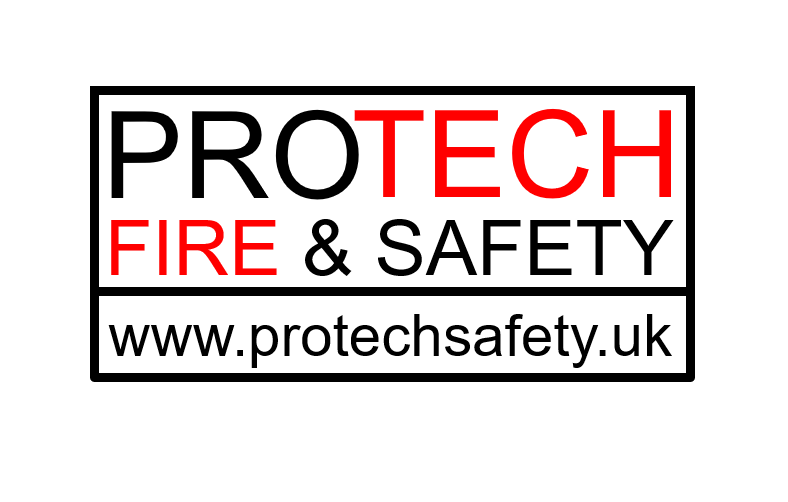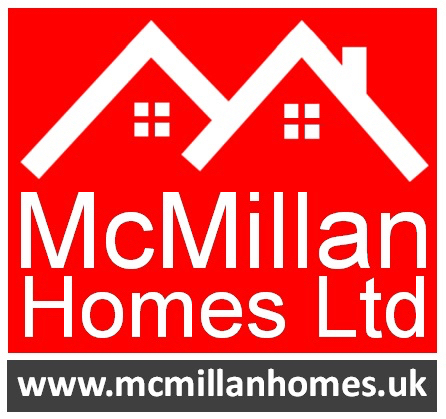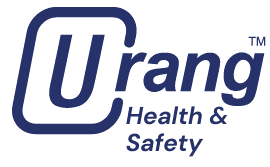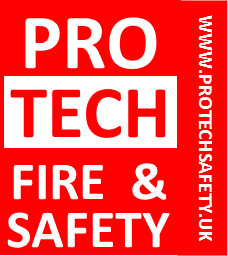Information
-
Audit Title
-
Document No.
-
Client / Site
-
Conducted on
-
Prepared by
-
Location
Untitled page
-
Front Elevation of Building
-
Disclaimer
The assessors believe the information contained within this risk assessment report to be correct at the time of printing. The assessors do not accept responsibility for any consequences arising from the use of the information herein. The report is based on matters which were observed or came to the attention of the assessors during the day of the assessment and should not be relied upon as an exhaustive record of all possible risks or hazards that may exist or potential improvements that can be made. Information on the latest legislation can be found on www.hse.gov.uk
Confidentiality Statement
In order to maintain the integrity and credibility of the risk assessment processes and to protect the parties involved, it is understood that the assessors will not divulge to unauthorised persons any information obtained during this risk assessment unless legally obligated to do so.
Part 1: FIRE GENERAL INFORMATION
The responsible person for fire safety
-
Building owner/manager or responsible organisation
-
Contact details of responsible person
1 The Building
-
Number of Floors
- 1
- 2
- 3
- 4
- 5
- 6
- 7
- 8
- 9
- 10
-
Number of access and egress points
- 1
- 2
- 3
- 4
- 5
- 6
- 7
- 8
- 9
- 10
-
Building plans, insert Plan
-
Brief description of building
2 Previous Fire loss experience
-
Has there been previous fire or fire loss in the building? is there a Fire & Recue service alteration notice in place?
3 The occupants
-
Maximum number of occupants in building at any given time:
Occupants at special risk
-
Are there building users at special risk? Do they require PEEPs?
-
Are physically disabled occupants catered for and if so what measures are in place such as ramps, disabled lift or care line alert system, refuge points etc.?
-
Are there occupants in remote areas? Is this covered by risk assessment?
4 Other relevant information
-
Are there external areas including refuse points, car parks or garages etc.?
-
Is there a transfer of fire risk to and from residential or commercial properties attached to or from within the building?
-
External areas and transfer risk evidence:
Part 2: FIRE RISKS
5 Arson
-
Does the building have adequate security measures in place, to prevent unauthorised access?
-
Are refuse areas segregated and controlled?
-
Is there sufficient control of unnecessary fire fuel sources in close proximity to the building or their availability for ignition by outsiders?
6 Smoking
-
Is smoking prohibited in the building?
-
Is the appropriate smoking prohibition notice displayed at all of the building's or site entrances?
-
Evidence of No Smoking sign:
7 Electrical sources of ignition
-
Is the fixed wiring installation periodically tested and inspected by an approved contractor?
-
Date of last fixed wiring test
-
Is the installation stated as being satisfactory?
-
Are reasonable measures taken to prevent fires of an electrical origin?
-
Are portable appliances regularly tested/inspected ?
-
Date of last PAT
-
Is there suitably restricted access to electrical cupboards and fuse boards in common areas?
-
Are all Fixed Appliances Tested (FAT) and records kept on site?
-
Date of Last FAT
-
Is there exposed wiring present?
8 Heating installation
-
What type of heating is present in the premises?
- Gas
- Electric
- Wood Burner
- Portable
- OTHER (please specify)
-
Evidence of heating installation
-
Are fixed heating installations and plant regularly tested by a competent contractor?
-
Evidence of testing
-
Date of last electrical/mechanical plant test
9 Cooking facilities
-
Are there communal cooking facilities in the building?
10 Lightning
-
Does the building have a lightning protection system if required? (if yes has it been tested on a regular 11 month cycle with records of testing retained) in accordance with BS 6651:1999 or BS EN 62305?
-
Date of last test
11 Other significant ignition sources that warrant consideration
-
List other ignition sources ON SITE:
-
Evidence of ignition sources:
12 Housekeeping (internal)
-
Is the standard of general housekeeping adequate within common areas of the building?
-
Are combustible materials stored appropriately and kept separate from ignition sources?
13 Hazards introduced by contractors, building works and visitors
-
Is there sufficient control over works by contractors in place, managed by the Responsible Person (e.g. Risk Assessment and Method statements, Relevant Insurances)?
-
Is fire safety information communicated to all visitors (including contractors) with signatures of understanding retained by the responsible person?
14 Dangerous Substances
-
Are dangerous substances present on the premises?
-
if so is there a COSHH management system in place, as well as relevant risk assessment?
Part 3: FIRE PREVENTION AND PROTECTION
15 Means of escape
-
Is the building provided with adequate means of escape in case of fire?
-
Number of designated escape routes?
-
Location of escape routes
-
Are exits easily and immediately openable where necessary?
-
Do fire exits open in the direction of travel where necessary?
-
Are fire exits secured and kept clear?
-
Are there reasonable travel distances, where there is a single escape route? (18m in normal conditions, 12m in high risk areas, 25m in low risk areas)
-
Are there reasonable travel distances, where there is more than one escape route? (45m in normal fire risk areas, 25m in higher fire risk areas, 60m in low risk areas)
-
Are escape routes unobstructed?
16 Measures to limit fire spread and development - Compartmentation.
-
Is there a sufficient standard of compartmentation?
-
Are fire doors or fire cabinets suitable? Are they fitted with fire resistant door furniture, intumescent strips, cold smoke seals and door closers (if required)?
-
Are flat entrance doors that open onto escape routes, fire rated doors, with fire rated door furniture, intumescent strips, cold smoke seals and door closers?
-
Are fuse boards protected by flame retardant covers?
-
Are linings/claddings that promote fire spread avoided?
17 Escape lighting
-
Is there a reasonable standard of escape lighting provided internally?
-
Is there a reasonable standard of escape lighting provided externally?
18 Fire safety signs and notices
-
Are fire safety signs and notices suitable and sufficient?
-
Evidence of fire safety signage
19 Means of giving warning in the event of fire
-
Is there a fire detection system in communal areas?
-
Type of detection
- Full fire alarm system
- Call point and interlinked smoke alarms
- interlinked smoke alarms
- stand alone smoke alarms
-
Is there a suitable and sufficient schematic plan of the fire alarm zones, call points and sensors available, displayed adjacent to the alarm panel?
-
Is the fire alarm/detection system tested and serviced as required by legislation?
20 Manual fire extinguishing appliances if applicable
-
Are fire extinguishers provided?
22 Smoke control systems
-
Are smoke vent/shutters required?
-
If so are they provided?
Part 4: MANAGEMENT OF FIRE SAFETY
-
To be enforced by person responsible for fire safety: Provide Name
23 Procedures and arrangements
-
Are service cupboards, mains feeds, COSHH cupboards and shut offs signed appropriately?
-
Are there competent persons available to assist in implementing fire safety arrangements?
-
Is there a Fire Emergency Plan in place and its details recorded?
-
Is the Fire Emergency Plan readily available for building users to read?
-
Is the Fire Emergency Plan available to the enforcing authority?
-
Do routine in-house inspections of fire precautions take place and if so are they documented in a Fire Safety Log Book?
-
Does the Fire Safety Log Book contain a a list of relevant and current emergency phone numbers?
24 Training and drills
-
Are building users given fire safety instruction on entering premises including evacuation procedures and are the fire evacuation instructions displayed within common areas?
-
Is there a list of fire marshals and fire wardens in the Fire Safety Log Book with their duties in event of fire? Including training records and dates of achievement?
-
Are emergency evacuation drills conducted at appropriate intervals and details recorded in The Fire Safety Log Book?
25 Testing and maintenance
-
Are fire doors containing magnetic door closers and magnetic locks serviced according to manufacturers recomendations?
-
Are fire doors, including final exit doors, well maintained including fire rated glass, beading, hinges, self closers, intumescent strips, cold smoke seals and signage? Are inspection records kept in the Fire Safety Log Book?
-
Is there weekly testing and six monthly servicing of the fire detection and alarm system? Are these records available in the Fire Safety Log Book?
-
Is there monthly and annual testing of the emergency lighting? Are these records in the Fire Safety Log Book?
-
Is there weekly visual inspection and annual maintenance and testing of fire extinguishing equipment? Are these records in the Fire Safety Log Book?
-
Is there 11 monthly inspection and test of the lightning protection system ? Are these records available in the Fire Safety Log Book?
-
Is there six monthly and annual testing of wet/dry risers? Are these records available in the Fire Safety Log Book?
-
Is there appropriate servicing and testing of sprinkler or suppression installations? Are these records available in the Fire Safety Log Book?
-
If relevant is there annual inspection and maintenance of the smoke ventilation systems? Ate these records in the Fire Safety Log Book?
-
Other relevant inspection and test
26 Records
-
Is there a suitable and sufficient fire safety log book?
-
Are there records of fire alarm tests and means of sounding alarm during test (call point activated/ area of building etc.)?
-
Does the Fire Safety Log Book contain details of false alarms and accidental activation?
-
Are there records of emergency lighting tests?
-
Are there records of electrical equipment testing?
-
Are there records of plant installations testing?
-
Are there records of maintenance and testing of other fire protection systems?
Part 5: ACTIONS, RISK RATING AND RECOMMENDATIONS
Fire Risk Items and actions
-
Item 1
-
Recommendations
-
Action
-
Item 2
-
Recommendations
-
Action
-
Item 3
-
Recommendations
-
Action
-
Item 4
-
Recommendations
-
Action
-
Item 5
-
Recommendations
-
Action
-
Item 6
-
Recommendations
-
Action
-
Item 7
-
Recommendations
-
Action
-
Item 8
-
Recommendations
-
Action
-
Item 9
-
Recommendations
-
Action
-
Item 10
-
Recommendations
-
Action
-
Item 11
-
Recommendations
-
Action
Part 6: General Health and Safety
-
Is there an asbestos management plan in place? is this conveyed to contractors where necessary?
-
Are slips and falls appropriately manged? (ramps, steps, paths etc)
-
Are hand rails in good condition?
-
Is there a legionella management plan in place? (COSHH, MHSWR, L8 ACOP)
-
Is COSHH suitable managed? (RA, MSDS, storage)
-
Are lift rooms secured and appropriately maintained? (signage, housekeeping, LOLER)
-
Is the standard of communal lighting adequate and free from defects? (clean, operational, bulbs present, free from blind spots)
-
Is vehicle movement and traffic segregation adequate and well manged? (car park, segregation, turning circles for emergency services)
-
Are refuse areas well managed? (free from COSHH items. not overloaded,suitably secured and segregated)
-
Are gardens well maintained? (free from trip hazards, garden tools, waste or other site specific hazards)
-
Is Control of Contractors well managed? (vetting, competency, insurances, risk assessments, method statements, etc)
-
Is security well managed? (CCTV, Security Operatives, Intruder Alarms, Outbuildings, Access & Egress, Security Lighting)?
-
Is access and egress suitable and sufficient? (including for disabled persons)
-
Is there a suitable system present for the reporting of notifiable injuries (RIDDOR)?
-
Is there suitable and sufficient signage fitted both internally and externally? (Plant rooms, hazards, lifts, escape, etc)
-
Miscellaneous health and safety concerns
General risk Health & Safety risk items and actions
-
Item 1
-
recommendations
-
actions
-
Item 2
-
recommendations
-
actions
-
Item 3
-
recommendations
-
actions
-
item 4
-
recommendations
-
actions
-
item 5
-
recommendations
-
actions
-
item 6
-
recommendations
-
actions
-
item 7
-
recommendations
-
actions
Re-Assessment
-
ProTech Fire Risk Assessors signature of completion
-
Responsible persons representative acknowledgement of verbal findings
Photographs
-
Add media










